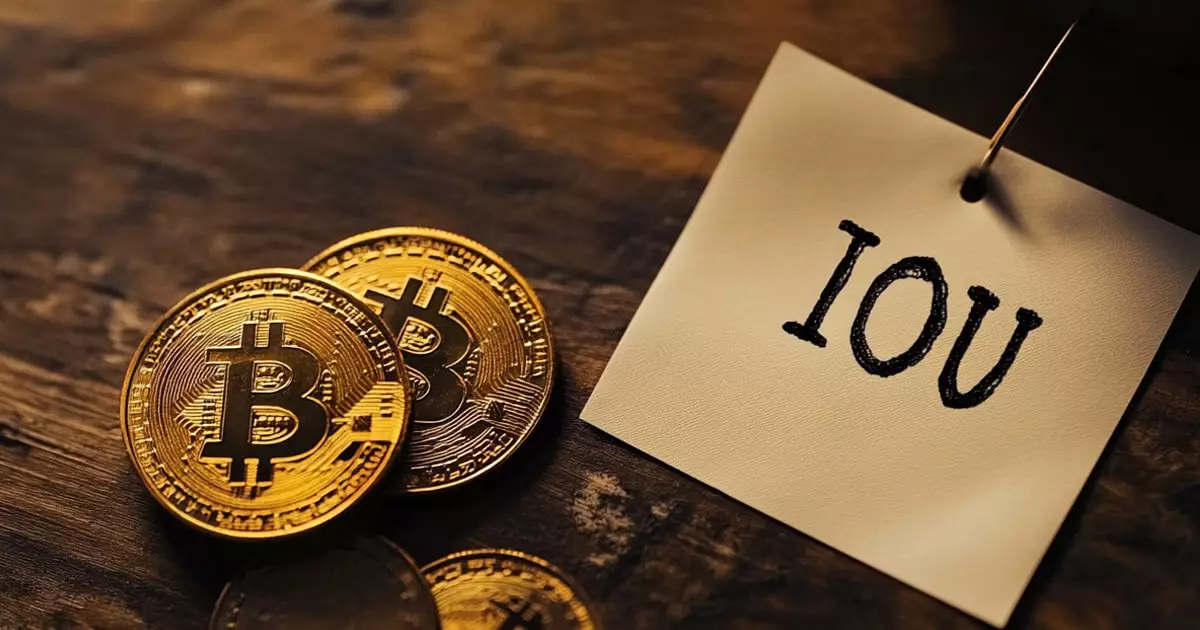In recent weeks, the cryptocurrency community has been rocked by speculative claims regarding Coinbase’s operations, particularly concerning its relationship with Bitcoin and financial products like the iShares Bitcoin Trust (IBIT) ETF, managed by BlackRock. This speculation, originating on social media platforms, primarily implied that Coinbase was manipulating Bitcoin prices by engaging in practices that involved issuing letters of debt instead of actually backing the ETF with tangible Bitcoin holdings. Such allegations not only undermine the credibility of Coinbase but also reflect existing skepticism and misunderstanding within the investor community.
Expert Opinions Dismissing the Speculation
Eric Balchunas, a senior ETF analyst at Bloomberg, has taken a firm stance against these allegations. He characterized them as “absurd,” emphasizing the regulatory oversight that BlackRock operates under. For Balchunas, the idea that BlackRock would tolerate such activities is unfounded, asserting, “They would flip out if $COIN was screwing around with their BTC.” This response not only underlines the seriousness of regulatory compliance for major players in finance but also indicates a broader understanding that institutions like BlackRock operate with significant checks and balances.
Moreover, Coinbase’s CEO, Brian Armstrong, promptly addressed these allegations. He affirmed the integrity of Coinbase’s practices, stating that all transactions concerning the ETFs in custody are “ultimately settled on-chain.” He further explained the nature of institutional trading, which might involve off-chain transactions, but clearly emphasized that the assets are held securely within Coinbase Prime vaults. Armstrong’s commitment to transparency highlights the essential role of institutional funds flowing into Bitcoin and the correct management of these relationships.
Underlying Skepticism of Investors
Balchunas pointed to two crucial reasons behind the emergence of these theories. First, there is a palpable frustration among Bitcoin investors regarding the persistent selling pressure leading to a downtrend since March. Instead of introspection, some tend to blame external entities like ETFs for their economic woes. Balchunas aptly commented, “Instead of looking in [the] mirror, it must be the ETFs,” suggesting that the blame directed at ETFs for market performance is misplaced.
Secondly, Balchunas highlights a broader distrust among Bitcoin investors towards traditional finance institutions. This skepticism can be compared to the historical doubts surrounding gold ETFs, where similar terms like “paper gold” emerged. This sense of déjà vu appears relevant as Bitcoin continues to mature, yet encounters similar challenges of legitimacy from its traditional counterparts.
Coinbase has recently faced scrutiny for introducing its new synthetic Bitcoin product, cbBTC, which quickly garnered attention in the market, hitting a market cap of over $100 million shortly after its launch. However, this rapid growth ignited significant criticism. For instance, Tron founder Justin Sun publicly claimed that cbBTC does not have proof of reserves and that the U.S. government possesses the capability to freeze user balances at will. Such criticisms echoed throughout the community, with many labeling cbBTC as merely a “paper” version of Bitcoin.
In response to this backlash, Armstrong acknowledged the trust that users must place in centralized custodians for the storage of Bitcoin backing Coinbase’s products. While this situation highlights inherent contradictions in the perspective that seeks to preserve Bitcoin’s decentralized ethos, Coinbase’s approach aims to bridge the gap between institutional finance and cryptocurrency markets.
The discourse surrounding Coinbase’s operations, allegations related to BlackRock, and the launch of cbBTC illuminates a complex landscape within the cryptocurrency market. It is essential for both critics and supporters to engage in informed discussions rather than conjecture based on misunderstandings. As the cryptocurrency space continues to evolve, grounded analysis and open communication from industry leaders remain critical in addressing skepticism and maintaining the integrity of digital assets. Investors must approach these topics with a discerning eye, critically considering the foundations of claims and the realities of the market they navigate.














Leave a Reply